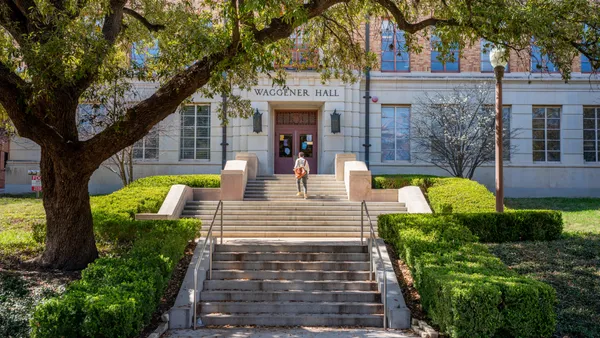With upcoming generations of student populations expected to be smaller than their predecessors, the demographic shift is set to leave colleges and universities competing for fewer students — and increasingly looking beyond their local and regional pools to boost enrollment.
As a result, institutions must now bring their A-game when it comes to marketing and recruitment. And while innovations ranging from video chat to virtual reality are making it easier to do that, there’s still plenty of room for even the most forward-thinking to stumble.
Bad website design
Yes, it’s 2017 and we’re still talking about bad website design on the part of colleges and universities. In fact, a simple inquiry on Twitter last year by blogger Melonie Fullick turned up a laundry list of complaints, which she catalogued via Storify.
At its most basic, an institution’s website should prioritize sharp, clean design in line with its branding (the Universities of Louisville and Kentucky do this well), neatly arranged and easily navigable content, and, perhaps most importantly, responsive design. Prospective students, after all, will be visiting from a variety of devices, and mobile navigation in particular should be top of mind.
Poor social media use
Social media has put millions of prospective students at the fingertips of admissions officers, but taking full advantage of it requires a thoughtful strategy.
Engagement Labs last year identified its top 50 institutions on both Facebook and Twitter. Baylor, Texas A&M and Ashford Universities taking the top spots for the former, while the University of Wisconsin-Madison, Texas A&M and Baylor came out on top for the latter. Factors that helped those schools come out ahead of the pack included posts about football and campus life, school pride, humor, calls to interact and responsiveness.
Institutions should take careful consideration along those lines when planning a strategy around social media messaging, frequency and marketing plans. Additionally, institutions can look beyond social media platforms to digital media sites popular with prospective students, like Buzzfeed. The site has previously worked with institutions like Temple University to provide sponsored content meant to engage potential applicants.
Approaching non-traditional students wrong
The aforementioned changing demographics haven’t just necessitated a rethinking of how institutions approach bringing in the typical fresh-out-of-high-school enrollee, but also “non-traditional” students. As of 2011, National Center for Education Statistics data showed 38% of the then-17.6 million undergraduate students in the U.S. as being over 25, and 25% were over 30. The number has risen further since, so much so that nontraditional has been declared the new traditional.
During a panel conversation at this year’s ASU+GSV conference in Salt Lake City, George Mason University VP for Academic Innovation & New Ventures Dr. Michelle Marks told attendees that her institution is rethinking how it serves a student body in which 60% of students are taking at least one night class. In reference to the 9-to-5 hours those students work, she said, “We are literally creating a roadmap of how we serve our students at student services, what needs to be automated. We think a whole lot about student services and what needs to be automated."
Alongside the possibility of automation, she noted the importance of extending office hours for services like financial aid, advising and career guidance. Seeing that a campus takes the effort to meet their needs can give these students additional incentive to choose that school.















